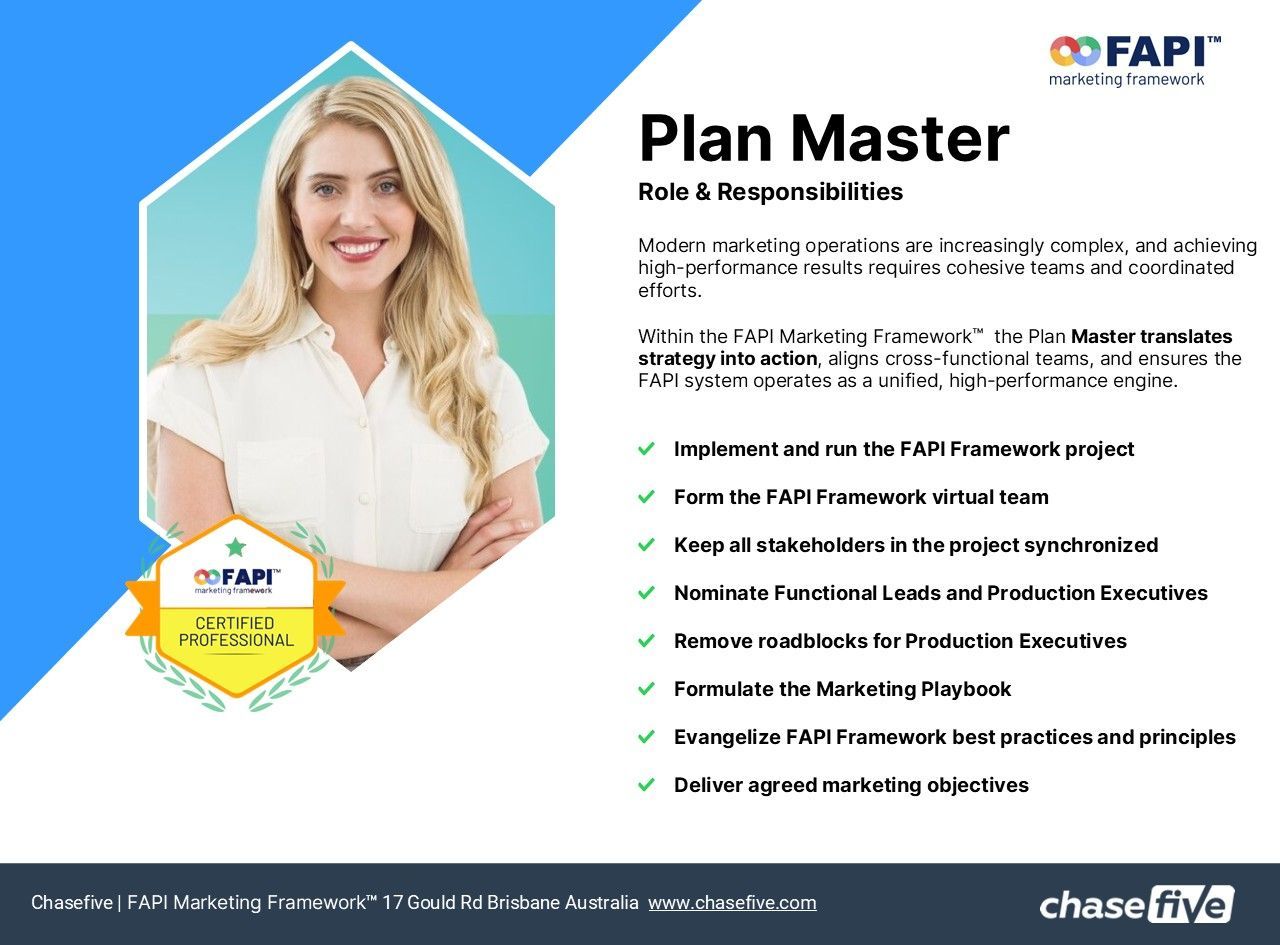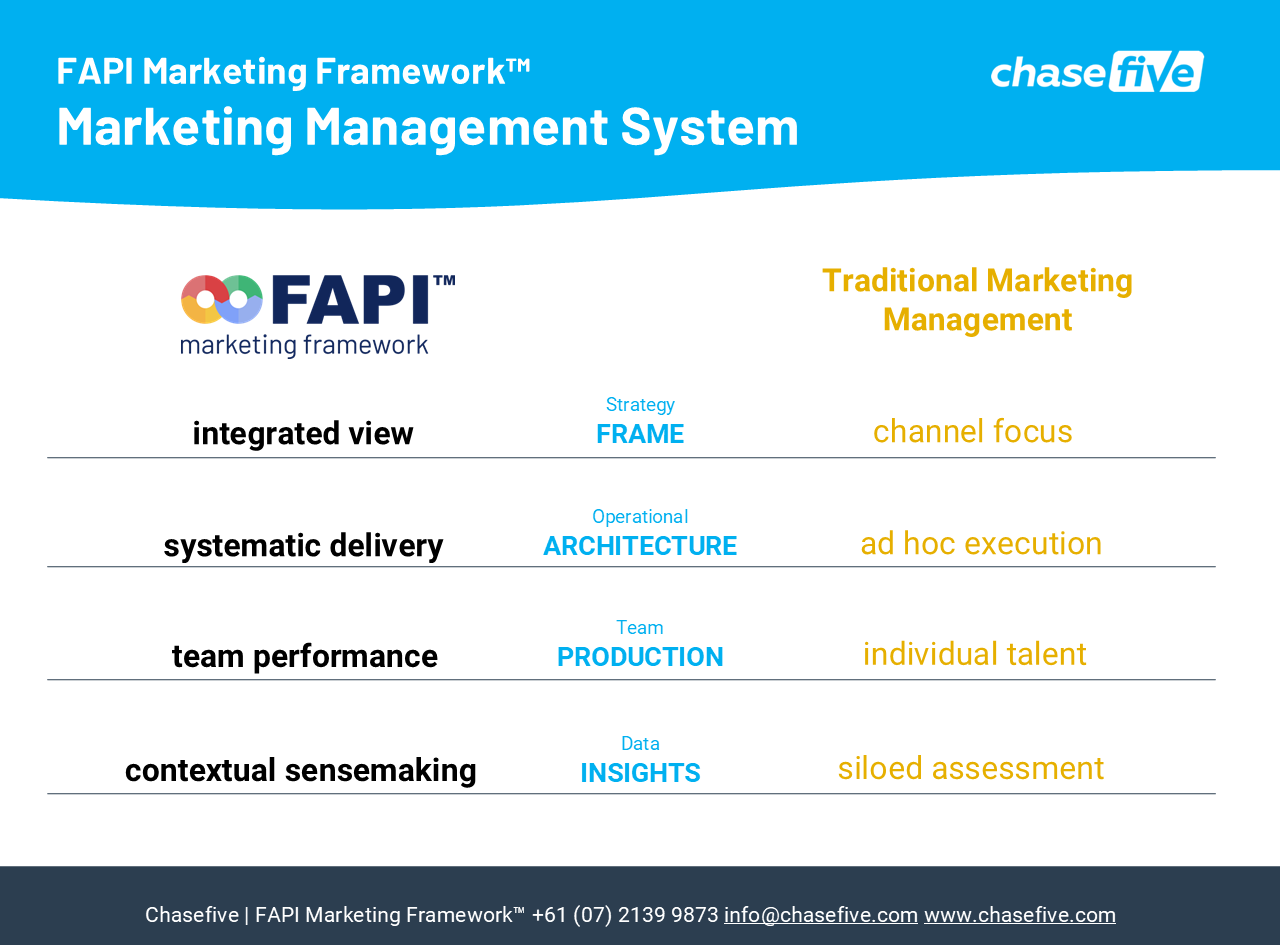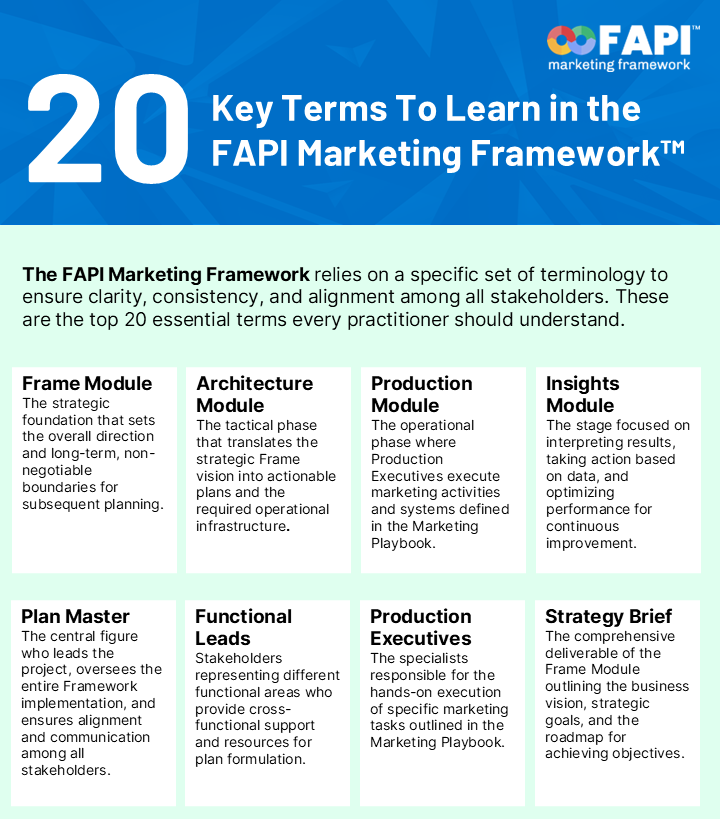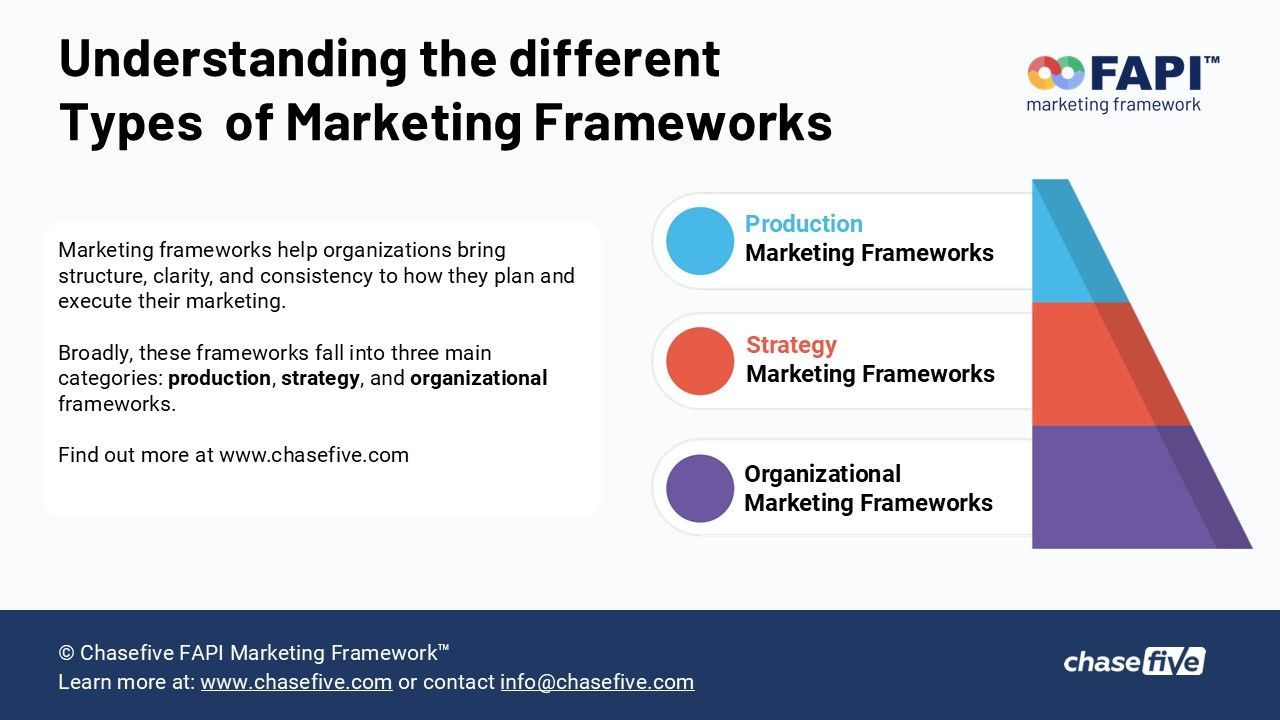The Four Domains to Win in Marketing: The Importance of an Integrated and Holistic View
In today's highly competitive business environment, marketing entails more than just creating catchy slogans or launching a few social media campaigns. It’s about adopting a comprehensive, data-driven, and strategic approach to every aspect of your marketing endeavors.
To succeed, businesses must adopt an integrated and holistic view of marketing that aligns strategy, tactics, operations, and analytics. The FAPI Marketing Framework offers a structured approach that allows organizations to thrive in each of these crucial areas.
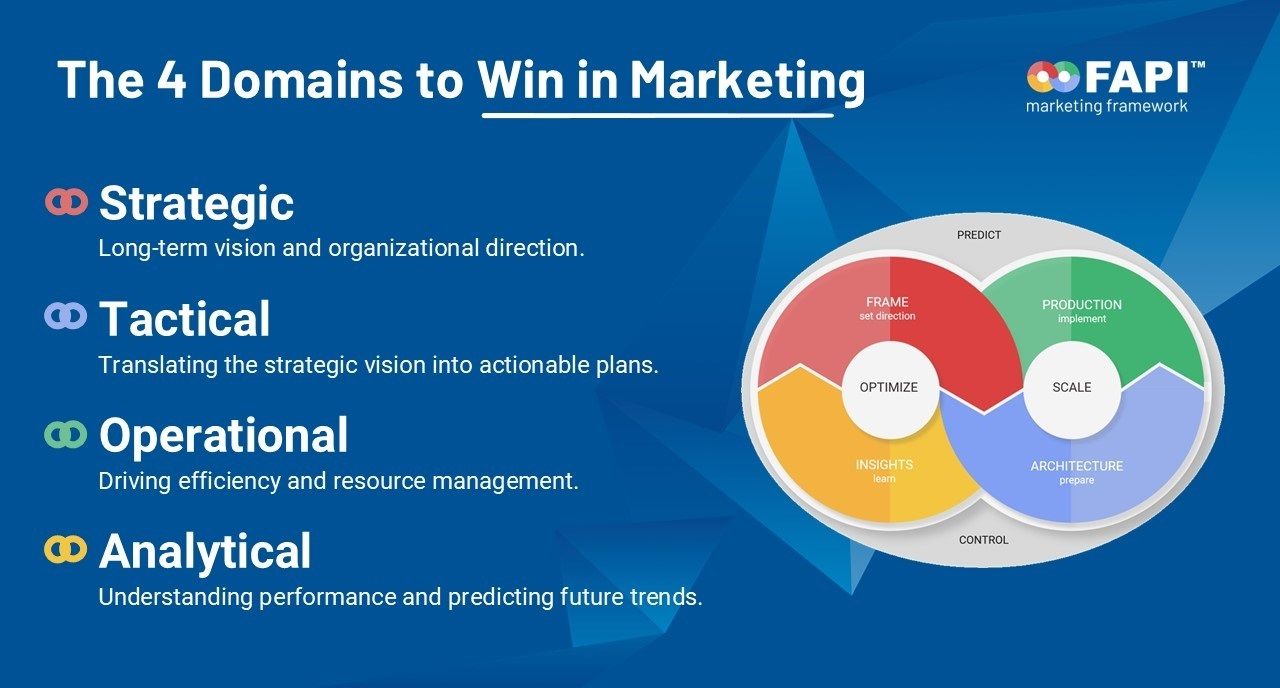
The first domain, Strategic Marketing, sets the foundation. This corresponds to the Frame module in the FAPI framework, where the overarching goals and direction of the marketing efforts are defined. A well-constructed strategic frame provides the structure that supports long-term vision and organizational direction.
The Tactical domain is where the strategic vision becomes reality, aligning with the Architecture module of the FAPI Marketing Framework. This phase focuses on the "how", taking the high-level strategies established in the Frame and translating them into practical, actionable marketing plans. The Architecture module helps build the tactical plans that connect your strategies to concrete actions.
In the Operational domain, the focus shifts to how efficiently marketing activities are executed. This corresponds to the Production module in the FAPI framework, where resources, processes, and workflows are optimized to ensure smooth execution of marketing plans. Operations in marketing are often overlooked, but they are critical to driving efficiency, managing resources, and ensuring consistency across campaigns.
Effective marketing Production involves workflow management, timeline adherence, budget control, and ensuring that every marketing effort is executed on time and within budget. Whether it’s automating email marketing campaigns or coordinating multi-channel efforts, the Production module ensures that the marketing engine runs smoothly, with resources optimized for maximum impact.
Finally, the Analytical domain, corresponding to the Insights module of the FAPI framework, is all about understanding the results of marketing efforts and using data-driven insights to guide future strategies. This is where marketers shift from "what we think" to "what we know" through data analysis, performance metrics, and KPIs.
The Insights module plays a critical role in evaluating campaign success, identifying areas for improvement, and making informed decisions that shape future marketing strategies. The insights gathered allow for continuous improvement by analyzing what works, understanding customer behaviors, and refining strategies for better outcomes. Predictive analytics also help marketing teams anticipate trends, allowing them to stay ahead of the competition.
For example, by analyzing data, you might find that social media ads drive higher conversion rates than email campaigns, allowing you to shift focus and resources to maximize returns.
The FAPI Marketing Framework offers a comprehensive, integrated approach to winning in marketing by covering all the necessary domains: Strategic, Tactical, Operational, and Analytical. Businesses that embrace a holistic view of marketing, ensuring that strategy, tactics, operations, and analytics work together seamlessly, will be the ones to gain a competitive edge and thrive in the marketplace.
By applying the FAPI framework, companies can ensure that their marketing is not only proactive and efficient but also adaptive to future trends and opportunities. In today’s fast-paced world, success lies in mastering these interconnected domains and leveraging the insights they provide to drive continuous growth.
Register free at the FAPI Marketing Academy to learn more.
